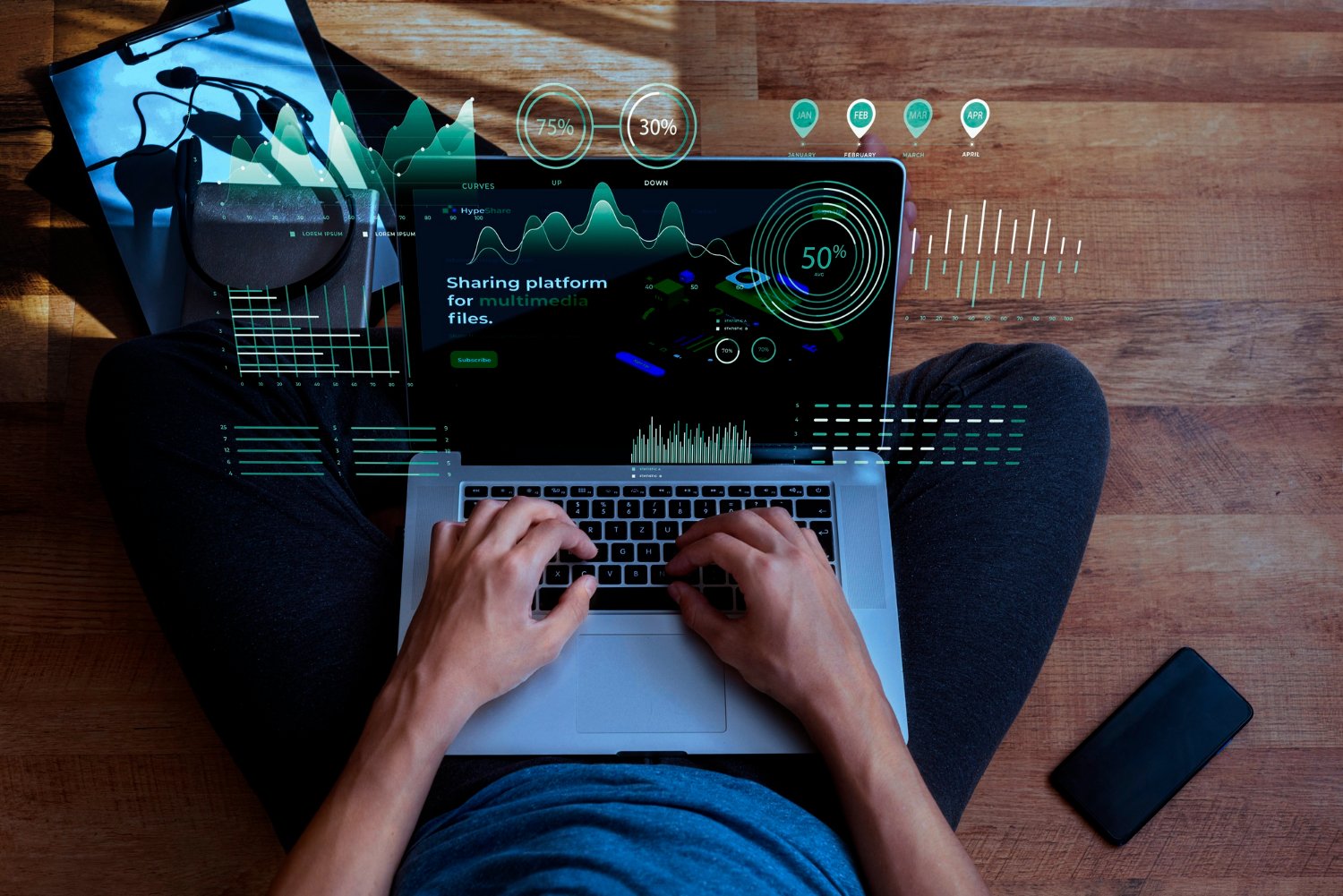Technology
Introduction to Python for Data Analysis

Python is now one of the most popular computer languages in the world, especially for analyzing data. It is ideal for anyone who wants to make decisions based on data, as it is simple, flexible, and equipped with powerful tools. Learning Python is a good idea whether you want to be a data scientist, a business analyst, or just someone who wants to know how to get useful information from data. It’s clear and easy to understand how to use Python for data analysis in this blog.
We’ll examine its most important tools, explain how they work in conjunction with AI, and direct beginners to resources for learning. It doesn’t matter if you’ve never written code before; this guide will help you. Many people start their journey with AI Python for beginners tools and then use the best Python tutorials for beginners to move on to more advanced ideas. And thanks to the internet, you can now learn Python free course options that fit any schedule. For a confident and clear start, let’s talk about Python data analysis.
Why Choose Python for Data Analysis?
Python is an excellent language for data analysis because it is easy to learn and has a robust ecosystem. It’s easy to clean up, change, and show data with libraries like Pandas, NumPy, and Matplotlib. With these tools, even people who aren’t good at code can get results. Python is continually improving because it is an open-source language. It now features tools that facilitate advanced analytics and machine learning. That’s why many introductions to AI using Python start with Python.
It’s great even if you don’t know much about computers because it’s easy to learn. Python has a strong group behind it as well. You can find help on a huge number of forums, blogs, and classes. If you want to get started fast, consider checking out a learn Python free course to build a strong foundation. To sum up, Python is currently the best language for data processing because it is both powerful and easy for beginners to learn.
Core Python Libraries for Data Analysis
When diving into Python data analysis, it’s important to know the tools of the trade. Python has powerful tools specifically designed for working with data. Pandas is one of the most well-known tools for working with and analyzing data. The software makes it easy to load datasets, clean data, and perform tasks such as sorting and filtering. NumPy is the next Python library. It is great for doing math. It works with arrays and matrices, which lets you do math quickly.
For data representation, Matplotlib and Seaborn are used to create graphs and charts that facilitate an easy understanding of the data’s meaning. These core libraries are useful and easy for beginners to understand, so many of the Many best Python tutorials for beginners focus on these core libraries because they are practical and beginner-friendly. There’s a good chance that you’ll learn about these libraries early on in an AI Python for beginners lesson. Explore these libraries through hands-on examples by enrolling in a learn Python free course or online bootcamp. They will become your best friends in the world of data.
Learning Path for Beginners
Starting your Python data analysis journey doesn’t have to be overwhelming. You can get better over time by taking small steps. To start, learn about variables, data types, loops, functions, and variables. Once you feel comfortable, learn how to use tools like Pandas to work with datasets. Today, there are lots of ways to learn. For those new to programming, an AI Python for beginners course is a great way to blend coding with practical examples.
If you’re on a tight budget, you can easily find a learn Python free course online that covers everything from installation to basic analytics. Break up your learning into stages. Start by focusing on the basics of Python. After that, add extra files like Pandas and Matplotlib. After work, do small jobs like looking at weather data or sales trends. The best Python tutorials for beginners are the ones that mix theory with hands-on practice. They keep things interesting and boost your confidence in your abilities.
Real-world applications of Python Data Analysis
Even if you understand the theory, it all makes more sense when you see how Python data analysis works in the real world. Companies use Python to keep track of how customers act, guess what sales will be, and make supply chains run more smoothly. Healthcare professionals review patient information to develop more effective treatment plans. Even sports teams use data to decide what to do during a game. When you read about AI Python for beginners, you’ll see a lot of examples of real-world datasets being used. For example, you might see examples of how to look at tweets, sales reports, or COVID-19 trends.
These examples show you how what you’ve learned can be used to solve real-world issues. Many of the best Python tutorials for beginners utilize project-based learning to help individuals who are just starting. These projects, such as creating a system that suggests movies to watch or visualizing the Earth’s temperature, are both enjoyable and useful. As you improve, platforms offering a learn Python free course often include case studies to help deepen your understanding. The real power of data analysis is shown when you see Python used in the real world.
Conclusion
Getting started with Python data analysis is one of the smartest choices you can make today. Python opens up a wide range of possibilities, from understanding customer behavior to identifying trends and making informed decisions based on data. It’s great for both beginners and experts, as it’s easy to use and comes with a wide range of libraries. Python is a great choice if you want to learn about business, science, or artificial intelligence.
Many learners find that starting with AI Python for beginners resources or choosing the best Python tutorials for beginners gives them a structured path to success. The good news? You can begin without spending money. There are plenty of learn Python free course options that are both high quality and beginner-friendly. Time, interest, and a desire to learn are all you need. You can learn useful skills and even find new job opportunities by putting in just a few hours a week. Python isn’t just a computer language; it’s also a powerful way to solve problems in the modern world.
Business
Crypto Mining Explained: Is It Still Worth It in 2025?

A lot has changed in the world of cryptocurrencies since 2025. In the past, crypto mining was seen as a gold rush for tech-savvy buyers. However, things have changed significantly in the last few years. Many people are wondering if crypto mining remains worthwhile in 2025, given the rising cost of energy, stricter regulations, and the growing popularity of proof-of-stake systems.
This blog will explain what cryptocurrency mining is, how it has evolved, and whether it remains a viable means of earning money today.
We’ll discuss the pros and cons, costs, and dangers that miners face. We’ll also discuss how new coins and tools are transforming the mining world. This article provides a clear account of the current state of mining, whether you’re a beginner looking to learn more or an experienced investor seeking to stay up to date. Let’s examine what crypto mining is really like in 2025 and determine if it’s still a viable option or a thing of the past.
What Is Crypto Mining and How Does It Work?
Crypto mining verifies that transactions in cryptocurrencies on a blockchain network are genuine. Miners use extremely powerful computers to solve complex mathematical tasks. By adding transactions to the blockchain, these systems confirm and protect them. Miners receive payment in cryptocurrency, typically in the form of the coin whose validity they helped establish. Proof-of-work (PoW) networks, such as Bitcoin, remain the primary location for mining in 2025. Ethereum, on the other hand, has transitioned to proof-of-stake (PoS), which alters the process of verifying transactions.
For Proof of Work (PoW) mining to work, you need special tools and a lot of power. How well mining goes depends on the availability of processing power, the cost of electricity, and the difficulty of the mining. Understanding the technical aspects of mining helps buyers determine if it’s a good investment opportunity. Mining has become increasingly competitive as concerns about the environment have grown, necessitating the need for more powerful equipment. Still, mining can be a good way to make money if you have the right equipment and the cost of electricity is low. This is especially true in places where energy is cheap.
The Rising Cost of Mining Equipment and Power
In 2025, the high cost of power and tools is a primary concern for miners. ASIC (Application-Specific Integrated Circuit) machines are expensive and require frequent updates to stay competitive. They are made to mine efficiently. A top-of-the-line ASIC miner can be expensive and will likely become outdated in a few years. Electricity remains the largest fixed cost. Mining rigs consume a substantial amount of power and remain in constant operation. When power costs a lot, businesses quickly lose money.
Some mines are moving to places like Iceland or parts of South America where energy is cheaper and cleaner. Some governments are also raising taxes or making it more difficult for large mining companies to obtain power. It costs more and makes things less certain. Breaking even can take months or even years if miners cannot obtain affordable hardware and energy. This makes it a dangerous investment for people who only mine occasionally.
Shift Toward Sustainable and Green Mining
As the world’s focus shifts to sustainability, cryptocurrency mining is being encouraged to have a reduced environmental impact. Many projects are moving toward more efficient ways of doing things in 2025. Renewable energy sources, such as wind, sun, and water, are being increasingly used to power mine farms. Over time, these methods not only cut costs but also make people less critical of crypto’s carbon footprint. Green mining is now more necessary than it was a trend.
Green mines have found it easier to operate in places like Canada and Norway, which offer tax incentives and access to cleaner energy sources. Some companies even advertise themselves as eco-friendly mines to attract investors. There are also improvements in chip efficiency and cooling systems that help reduce energy use overall. Making the switch to green mining requires an initial investment, but it helps ensure long-term sustainability and aligns with environmental goals. When rules become stricter, miners who fail to adapt may be forced out of the market.
Proof of Stake vs. Proof of Work: The Big Debate
This marks a significant shift in the world of cryptocurrencies in 2025: the ongoing debate between proof-of-stake (PoS) and proof-of-work (PoW) systems. Bitcoin utilizes the Proof of Work algorithm, which requires miners to solve complex puzzles to verify transactions. PoS, on the other hand, lets people back up deals with the coins they own and are willing to “stake.” Since Ethereum transitioned to Proof of Stake, many new coins have followed suit. PoS is thought to be more flexible and uses less energy. Because of this change, many coins don’t need to be mined in the usual way as often.
However, Bitcoin, the most popular cryptocurrency, still employs PoW, which means that mining remains important. Potential workers should be aware of this change. As more coins switch to PoS, there are fewer chances to make money by mining PoW coins. Newbies must decide whether to mine Proof-of-Work (PoW) coins, stake Proof-of-Stake (PoS) coins, or spend in other ways related to cryptocurrencies, such as yield farming or node operation. What you should do depends on your budget, goals, and technical skills.
Is Mining Still Profitable in 2025?
Do people still want to mine in 2025? That’s the big question. It’s not easy to say. Mining isn’t as appealing as it once was for casual individuals who lack substantial resources. Small or negative returns can occur due to factors such as high start-up costs, power bills, and market volatility. Some small mines might lose all their money. However, mining is still profitable for larger businesses that have access to cheap power and the latest tools. Industrial mining farms continue to generate revenue, particularly since the price of cryptocurrencies like Bitcoin remains high.
Mining pools also lower risk by allowing individuals to collaborate and share the benefits. Now, planning and scale are more important than ever in mining. No longer is it enough to just plug in a machine and wait for the money to come in. To successfully pursue mining in 2025, you should conduct extensive research. Consider all the risks and associated costs. Many people may achieve better returns with less effort if they stake or trade directly in coins.
Conclusion
Crypto mining isn’t the same as it used to be in 2025. The field has evolved, now shaped by stricter regulations, environmental concerns, and increased business costs. Mining is still mostly about validating deals in exchange for rewards, but the game is now much more difficult and competitive. In the right situations, mining can still be a viable way to generate income. To be successful now, you need to have access to affordable, renewable energy, high-tech mining equipment, and a deep understanding of the market.
It’s possible that mining may no longer be the best way for new crypto enthusiasts to get started. Other options, such as investing, staking, or participating in decentralized finance (DeFi), may yield better results with lower risk. To sum up, cryptocurrency mining is still thriving, but it’s no longer the easy money machine it once was. Carefully consider your goals, resources, and risk tolerance before making a decision. In 2025, mining will pay off for people who work smart, not just hard.
Business
How AI Automation Companies Are Powering the Next Wave of Digital Transformation in the US

Significant changes are occurring in the United States’ digital landscape, and the emergence of AI automation company is a major contributor to these transformations. These companies aren’t just changing how businesses work; they’re changing how they do things. Businesses are getting faster, smarter, and more efficient thanks to new AI automation services and smart AI automation solutions. Every industry is being affected by automation powered by AI, from manufacturing to healthcare, banking, and retail services.
To stay ahead in today’s competitive business world, you need to utilize technology that reduces costs, enhances productivity, and facilitates informed decision-making. They make custom plans that automate boring jobs, look at data in real time, and give you new information that you couldn’t get before. This move toward change led by AI is not a fad. It fundamentally changes the way groups work. In this blog, we will explore how AI robotics companies are driving the next wave of digital transformation in the United States.
Revolutionizing Business Operations Across Industries
One of the most important things that an AI automation company can do is change the way businesses work. AI automation solutions are now replacing traditional methods that require extensive human input. These solutions are faster, more accurate, and more consistent. In production, AI automates assembly lines and can tell when machines will break down. It analyzes patient information to help doctors make more informed decisions. It is used by financial services to detect fraud and assess the level of risk associated with transactions. As a result? Better customer service, faster speed, and fewer mistakes. By adding AI to everyday tasks, every AI automation company also helps businesses rethink how they do things.
Enhancing Customer Experience With Intelligent Tools
Companies now put the customer experience first, and AI automation companies are at the front of the pack when it comes to providing smart, personalized exchanges. AI automation services can help businesses understand clients, predict their needs, and tailor their interactions. For example, chatbots are becoming increasingly intelligent and can provide support 24 hours a day, 7 days a week, and resolve problems more efficiently than human agents. AI can also follow customers as they go and offer suggestions for improvement in real-time. This enables companies to enhance their digital presence and provide users with a seamless experience. An AI automation company helps businesses stay in touch with their customers in smarter and more useful ways, whether they’re in e-commerce, banking, or telecom.
Driving Data-Backed Decisions With Advanced Analytics
There’s no doubt that data is powerful, but it’s easy to get lost in the noise if you don’t have the right tools. AI automation companies offer AI automation solutions that utilize vast amounts of data to derive actionable insights that can be applied immediately. AI helps people make decisions faster and more effectively by predicting trends, such as sales, and optimizing supply chains.
Companies now use data powered by AI to find patterns and make very accurate predictions about what will happen. Automation enables people to focus on data first, which in turn helps businesses make informed decisions that align with their goals. As a result? More flexibility, better use of resources, and a big advantage in a market that is becoming more and more computerized.
Empowering Workforce Productivity and Innovation
People worry that AI will take away jobs, but many AI automation companies work to empower workers by making tools and systems smarter. Workers can focus on strategy and new ideas when time-consuming tasks like data entry, report writing, and inventory tracking are automated. This motivates people to be more interested in their jobs and more creative. Companies are also teaching their teams how to work with AI tools through AI automation services. The combination of human knowledge and computer intelligence opens up new possibilities for everything from product development to marketing strategy. In short, AI isn’t just a way to save money; it’s also a way to help people reach their full potential in the digital age.
Supporting Scalable Growth for Businesses of All Sizes
An AI automation company is crucial for businesses that want to grow without complicating their operations. Companies can handle more work, meet customer needs, and adapt to changes in the market more efficiently with AI automation services. This flexibility changes everything for small and medium-sized businesses. Now that they have access to the same powerful AI automation solutions as bigger companies, they can compete with them without having to build huge facilities or hire lots of people. AI helps businesses grow faster and smarter by automating tasks like marketing efforts and managing inventory. As the company grows, it makes sure that systems can change to keep things running smoothly. Because of this, AI is not only a tool for improving things, but it is also a solid base for long-term growth that lasts.
Conclusion
As each AI automation company grows, it marks the start of a new era of growth and digital innovation in the US economy. These businesses are building the groundwork for smarter, faster, and more responsive ones to come. AI automation services are delivering measurable results, whether they’re enhancing the customer experience, enabling real-time decision-making, or increasing worker productivity. The change isn’t just happening in big businesses. Small and medium-sized businesses are also using AI automation solutions to stay competitive and prepare for the future.
Businesses that adopt AI can grow their operations, reduce human errors, and tailor their services to each customer. AI automation companies will play an even larger role as this digital wave continues to expand. They’re not just service providers; they’re also partners in progress who help the US economy grow smartly and flexibly. The potential of AI must be leveraged by organizations that want to achieve long-term success. In today’s data-driven world, it is necessary to excel.
General
Top Mental Health Apps for Teens: Free Tools to Manage Anxiety and Boost Well-Being in 2025

There are many social and mental health problems that teens today have to deal with. Life can become overwhelming at times, with stress from school, group pressure, and constant exposure to social media. Many young people struggle with managing their worries, staying focused, or finding safe ways to express their feelings. Thankfully, technology is making things easier. Mental health apps specifically designed for teens are helpful tools that can help them manage stress, develop emotional resilience, and enhance their overall well-being.
It is easier than ever to get help with these apps because they are private, simple, and often free. With features like mood tracking, guided meditations, journaling prompts, and even AI-driven chatbots, these digital tools are becoming something that many teens use every day. They help kids form better habits, feel less stressed, and have more control over their feelings. This blog explores the top mental health apps for teens in 2025, highlighting some of the best free mental health apps and mental health apps for anxiety that are truly making a difference.
Mood-Tracking and Journaling Apps
Teenagers can better understand how they feel with the help of mood-tracking apps. Users can start to see trends in their mental health by keeping track of their daily thoughts and actions. Most of the time, these apps have journaling tools that let teens write about their day in private. Writing in a journal helps you relax and think more clearly. Some of the best mental health apps for teens include mood charts, gratitude journals, and daily prompts. They’re simple to use and help people become more emotionally aware over time.
Many of these tools also include exercises to help you relax and motivational words to keep you motivated. In 2025, apps like Moodpath and Daylio are becoming increasingly specialized by utilizing AI to suggest beneficial activities. These apps are especially helpful for kids who are going through ups and downs because of stress or anxiety. They are some of the best free mental health apps out there right now, and they give you a safe way to express yourself and think. Discovering what triggers negative emotions can help teens take control of their feelings.
Guided Meditation and Breathing Exercises
Teenagers often have problems with their mental health; among them is anxiety. Luckily, mental health apps for anxiety that help with worry often come with guided meditation and breathing exercises. These activities help kids clear their minds and get back on track. Meditation songs that are easy to follow can be found for free on apps like Headspace and Insight Timer. Some apps are specifically designed for teens and feature soothing voices and subjects that teens can relate to.
Breathing techniques, especially those accompanied by pictures or sounds, can help calm a racing mind. You can do these routines anywhere, before or after a test or when you’re feeling stressed. They only take a few minutes. Many of the top mental health apps for teens have daily check-ins and notes to keep them on track. Regular use of these tools can help you sleep better, feel better, and have less worry and panic. They are some of the best free mental health apps that help you stick to good routines and take care of yourself.
Mental Health Chatbots and Peer Support
Teenagers often need to talk to someone, but it can be intimidating to discuss personal issues with a parent or doctor. This is where robots for mental health come in. These digital friends help you by having talks that feel private and personal. Based on cognitive-behavioral therapy (CBT), chatbots like Woebot and Wysa offer pre-written answers. They help people deal with negative thoughts and change their thinking in healthy ways. These tools are designed to listen without judgment, providing a safe space for people to express their feelings or release them.
Teens can share their stories and get help from other teens anonymously in some of the best mental health apps for teens. It can be comforting to know that you are heard and that other people share the same feelings. These apps are especially helpful for people who feel alone or anxious. These are some of the best free mental health apps that offer help 24 hours a day, 7 days a week. Teenagers can feel less alone when they know they can get help quickly.
Tools for Focus and Digital Detox
A lot of kids have trouble focusing and getting tired of screens, which can make their anxiety worse. Some of the top mental health apps for teens now help kids reduce their screen time and improve focus. Teenagers can use these tools to create quiet spaces for studying or resting, take regular breaks from screens, and spend less time on social media. Timers and prizes are used in apps like Forest and Focus Keeper to help you change the way you focus. Some even allow users to grow fake trees or earn points for not using distracting apps.
These features encourage teens to use their time in a fun and useful way. Focus tools can also help you feel less stressed when you’re doing many things at once. Using screens less can help you sleep better and feel less stressed. These are some of the best free mental health apps because they help you get things done and take care of yourself at the same time. Small changes to how kids use technology can make a big difference for those who are dealing with anxiety or burnout. Individuals who utilize these tools are reminded that maintaining a balance is crucial for their mental well-being.
Conclusion
Now more than ever, mental health is important, especially for teens who are dealing with school, relationships, and big changes in their lives. Digital tools aren’t just a bother in 2025; they’re part of the answer. You can get help, learn, and improve your mental health with the top mental health apps for teens. These apps meet kids where they are by providing them with tools such as mood trackers, journals, chatbots, and focus aids. Many of them are free, making it easier than ever to get help.
Whether someone has worries or just wants to feel better every day, these tools make it easy to form good habits. Teenagers can learn how to take care of their mental health in ways that don’t feel forced or critical. Some of the best free mental health apps can’t replace professional help, but they can help teens and young adults take small steps toward recovery and growth. In a world full of stress, these apps can help you feel better emotionally and find peace within yourself.
-

 Crypto5 months ago
Crypto5 months agoTop Altcoins Outperforming Bitcoin in 2025
-

 Business6 months ago
Business6 months agoDiscussing How Climate Change Is Influencing Men’s Fashion
-

 Fashion1 year ago
Fashion1 year agoThe Ultimate Guide to Fall 2024 Fashion Trends You Can’t Miss!
-

 Business5 months ago
Business5 months agoHow to Buy Trump Coin in 2025: Step-by-Step Guide + Price Prediction Insights
-

 Business1 year ago
Business1 year agoBest SEO Tools for Small Businesses: A Beginner’s Guide
-

 Business1 year ago
Business1 year agoDigital Marketing for Doctors: Effective Strategies for Medical Marketing
-

 General3 months ago
General3 months agoThe Astronomer Coldplay Concert Scandal: A Viral Story That Shook the Internet
-

 General5 months ago
General5 months agoThe Psychology of Likes: What Social Media Is Really Doing to Your Brain







